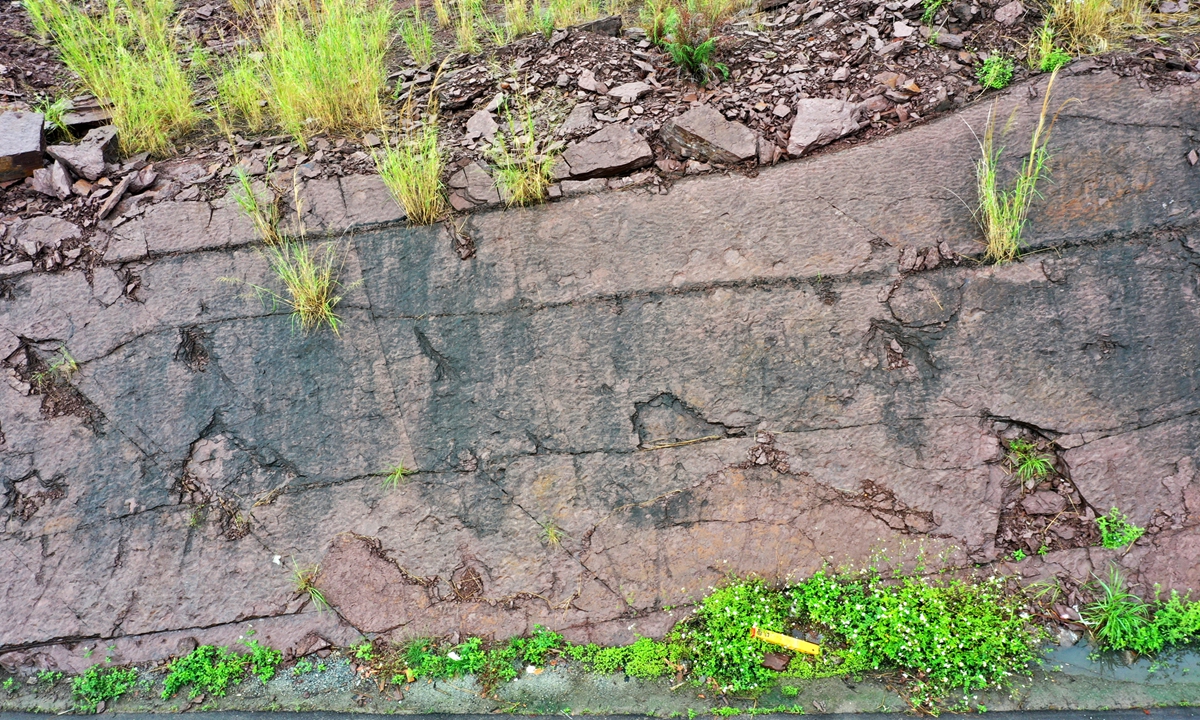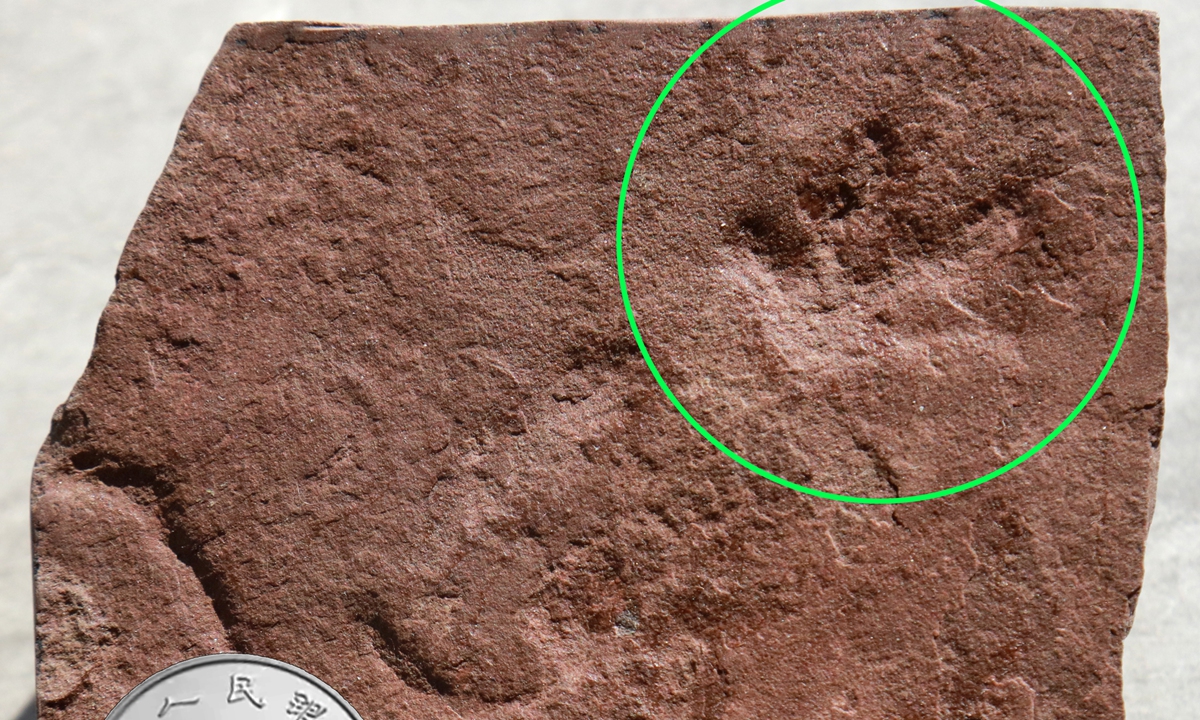
Field outcrop at the mammaliaform and dinosaur track site in Huaiji, South China's Guangdong Province (Photo: Courtesy of Liang Xuanrui)
Chinese researchers announced on Thursday the landmark discovery of the first mammaliaform track from the Cretaceous period in Guangdong Province, South China. This find sheds new light on the diversity of ancient vertebrates and their ecosystems in the region, Chinese dinosaur expert Xing Lida from the China University of Geosciences (Beijing), told the Global Times on Thursday.
The discovery, led by Xing in collaboration with co-authors from Brazil, South Korea, Germany, and the UK, occurred in Huaiji county, Zhaoqing city, Guangdong Province. The findings were published in the international geological journal, Italian Journal of Geosciences.
According to Xing, the dinosaur tracks were first spotted in July 2021 by a middle school student and fossil enthusiast, Ni Zijie.
Xing's team subsequently investigated, identifying a set of theropod dinosaur footprints classified as a "Paracorpulentapus-eubrontid-grallatorid" assemblage- a combination previously known from Cretaceous deposits in China's Sichuan and Anhui provinces.
The breakthrough came in April 2024 when Mi Jialin, a university junior studying in South Korea and a seasoned fossil hunter, revisited the site and uncovered additional tracks, including an exceptionally well-preserved mammaliaform track, alongside more theropod dinosaur footprints and potential quadrupedal tracks.

Cretaceous mammaliaform tracks discovered in South China's Guangdong Province (Photo: Courtesy of Mi Jialin)
The mammaliaform track, measuring just two to five centimeters long, is a standout find. It exhibits a distinct transverse oval shape with four short, broad toes bearing rounded pads and blunt tips, and is morphologically similar to tracks classified as Chelichnopodidae, which are primarily known from wind-formed environments like those in Brazil.
This track represents the first such discovery in southern China.
Crucially, it was found preserved in river or lake sediments, suggesting that the Cretaceous mammaliaform possessed broader ecological adaptability than previously understood for this track type.
Mi also documented well-defined three-toed theropod tracks with clear claw marks, measuring 9.5 centimeters long. These were tentatively classified as a grallatorid morphotype.
Furthermore, two large quadrupedal tracks, approximately 45 centimeters long, exhibited a walking pattern distinct from the straight lines typical of bipeds and were potentially made by a sauropod dinosaur.

Reconstruction of the early Cretaceous dinosaur fauna in South China's Guangdong Province (Photo: Courtesy of Xing Lida)
"This discovery marks the first recorded evidence of mammaliaform tracks within the Cretaceous strata of South China," said Xing, adding that it significantly enriches the understanding of the diversity of Cretaceous vertebrates in this region and provides valuable data for reconstructing paleo-ecosystems.
















